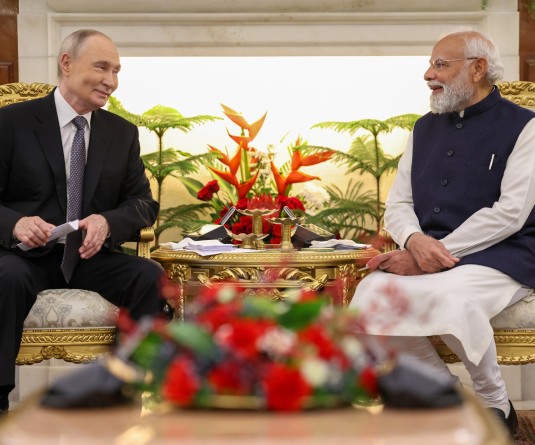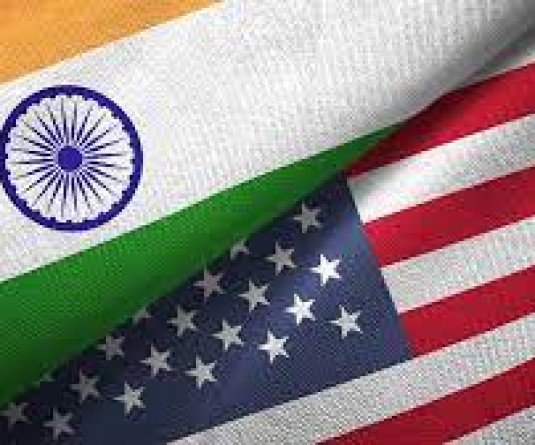
South Korean protesters shout slogans in a rally against the annual joint military exercises, dubbed Key Resolve and Foal Eagle, between South Korea and the United States, in front of the South Korean and United States War Command Center in Seongnam, South Korea on Monday, February 28. (AP Photo)
SEOUL, February 28 (Reuters): South Korean and U.S. forces began on Monday military exercises that they say are defensive but which have raised tension and led to North Korean threats to use nuclear weapons and turn Seoul into a "sea of flames."
The North's threats were similar to rhetoric unleashed last year when tension peaked on the Korean peninsula after two attacks by the North killed sailors and civilians in the South and drove its conservative government to pledge retaliation.
The friction dampened market sentiment in Monday trading, with stocks closing down although defense-related issues outperformed the index. The won currency was briefly hit, although it regained ground on demand from domestic exporters. Bond investors shrugged off the tension.
South Korea brushed off the North's threat saying the drills were defensive and would be going ahead in full to test the readiness of its troops and their U.S. allies against any attack from the North.
"These are annual drills, and we don't call them off because the North is unhappy about them," a South Korean government official said.
The U.S. military also said in a statement that the drills were defense-oriented and "designed to enhance readiness, defend the Republic of Korea and respond to any potential situation," adding they were "planned months in advance and they are not connected to any current world events."
North Korea has twice set off nuclear devices but experts do not believe it has mastered the technology of miniaturizing a nuclear warhead to mount it on a delivery weapon such as a missile.
The renewed tension coincided with a campaign by the South's military to demoralize the North's hungry troops and residents by dropping leaflets telling of protests in Egypt and Libya against leaders there. The South has also been dropping small baskets of food and medicine from balloons.
"TREMENDOUS IMPACT"
While the campaign is aimed at encouraging North Korean residents to think about change, it is not seen as enough to trigger the kind of uprisings seen in the Middle East, analysts and officials in Seoul said.
But the campaign could alarm the North's leadership as it steps up a succession process with preparations for leader Kim Jong-il's youngest son, still in his 20s and with little to show in terms of accomplishments, due to take over from his father.
"The leaflets do seem to be having a tremendous impact on the North's leadership," a senior South Korean official said. "The Middle East situation seems to have little impact on the North's residents."
The South Korean and U.S. drills, which run through March 10 and involve 2,300 U.S. troops joining hundreds of thousands of South Koreans, focus on crisis management and command and control.
They will continue with large, field-training exercise that will run through April with many of the 10,000 U.S. troops taking part being shipped in from posts outside the Korean peninsula.
The United States has about 30,000 troops in South Korea to help defend against the North. The 1950-53 Korean War was ended with a truce, not a full treaty.
On Monday, the North's official Rodong Sinmun said the South was driving the peninsula closer to a nuclear war by joining forces with foreign troops.
The North's threats were similar to rhetoric unleashed last year when tension peaked on the Korean peninsula after two attacks by the North killed sailors and civilians in the South and drove its conservative government to pledge retaliation.
The friction dampened market sentiment in Monday trading, with stocks closing down although defense-related issues outperformed the index. The won currency was briefly hit, although it regained ground on demand from domestic exporters. Bond investors shrugged off the tension.
South Korea brushed off the North's threat saying the drills were defensive and would be going ahead in full to test the readiness of its troops and their U.S. allies against any attack from the North.
"These are annual drills, and we don't call them off because the North is unhappy about them," a South Korean government official said.
The U.S. military also said in a statement that the drills were defense-oriented and "designed to enhance readiness, defend the Republic of Korea and respond to any potential situation," adding they were "planned months in advance and they are not connected to any current world events."
North Korea has twice set off nuclear devices but experts do not believe it has mastered the technology of miniaturizing a nuclear warhead to mount it on a delivery weapon such as a missile.
The renewed tension coincided with a campaign by the South's military to demoralize the North's hungry troops and residents by dropping leaflets telling of protests in Egypt and Libya against leaders there. The South has also been dropping small baskets of food and medicine from balloons.
"TREMENDOUS IMPACT"
While the campaign is aimed at encouraging North Korean residents to think about change, it is not seen as enough to trigger the kind of uprisings seen in the Middle East, analysts and officials in Seoul said.
But the campaign could alarm the North's leadership as it steps up a succession process with preparations for leader Kim Jong-il's youngest son, still in his 20s and with little to show in terms of accomplishments, due to take over from his father.
"The leaflets do seem to be having a tremendous impact on the North's leadership," a senior South Korean official said. "The Middle East situation seems to have little impact on the North's residents."
The South Korean and U.S. drills, which run through March 10 and involve 2,300 U.S. troops joining hundreds of thousands of South Koreans, focus on crisis management and command and control.
They will continue with large, field-training exercise that will run through April with many of the 10,000 U.S. troops taking part being shipped in from posts outside the Korean peninsula.
The United States has about 30,000 troops in South Korea to help defend against the North. The 1950-53 Korean War was ended with a truce, not a full treaty.
On Monday, the North's official Rodong Sinmun said the South was driving the peninsula closer to a nuclear war by joining forces with foreign troops.






